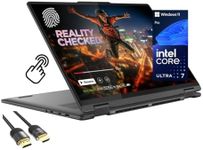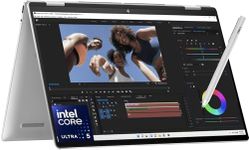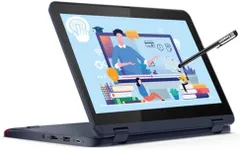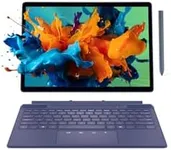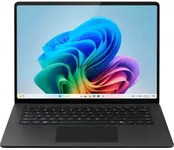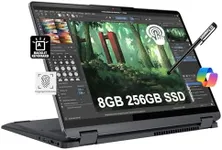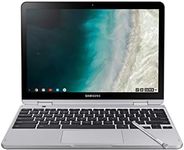Buying Guide for the Best 2 In 1 Touchscreen Laptops
Choosing a 2-in-1 touchscreen laptop can be a bit overwhelming given the variety of options available. These devices combine the functionality of a laptop with the convenience of a tablet, making them versatile for different tasks. To find the best fit for you, it's important to consider several key specifications that will impact your overall experience. Understanding these specs will help you make an informed decision based on your personal needs and preferences.Display SizeThe display size of a 2-in-1 touchscreen laptop is measured diagonally in inches. This spec is important because it affects both portability and usability. Smaller screens (10-12 inches) are more portable and easier to handle in tablet mode, making them ideal for on-the-go use. Medium screens (13-14 inches) offer a balance between portability and screen real estate, suitable for both work and entertainment. Larger screens (15 inches and above) provide more space for multitasking and detailed work but can be bulkier to carry around. Choose a size that fits your lifestyle and how you plan to use the device.
ProcessorThe processor, or CPU, is the brain of the laptop and determines how fast and efficiently it can run applications. This spec is crucial for overall performance. Entry-level processors (e.g., Intel Core i3, AMD Ryzen 3) are sufficient for basic tasks like web browsing and word processing. Mid-range processors (e.g., Intel Core i5, AMD Ryzen 5) offer better performance for multitasking and more demanding applications. High-end processors (e.g., Intel Core i7, AMD Ryzen 7) are ideal for intensive tasks like video editing and gaming. Consider what tasks you'll be performing most often to choose the right processor.
RAMRAM (Random Access Memory) is the memory that your laptop uses to store data that is actively being used. This spec is important for multitasking and overall speed. 4GB of RAM is the minimum for basic tasks, but 8GB is recommended for smoother performance and the ability to run multiple applications simultaneously. For more demanding tasks like video editing or running virtual machines, 16GB or more is ideal. Think about how many applications you typically use at once and choose the amount of RAM that will keep your laptop running smoothly.
StorageStorage refers to the amount of space available to store your files, applications, and operating system. This spec is important for how much data you can keep on your device. Solid State Drives (SSDs) are faster and more reliable than traditional Hard Disk Drives (HDDs). A 128GB SSD is sufficient for basic use, but 256GB or 512GB SSDs offer more space for applications and files. If you store a lot of large files like videos or games, consider a laptop with 1TB of storage or more. Assess your storage needs based on the types of files you keep and how much space they require.
Battery LifeBattery life indicates how long the laptop can run on a single charge. This spec is important for portability and convenience, especially if you plan to use the laptop on the go. Laptops with shorter battery life (up to 6 hours) may require frequent charging, which can be inconvenient. Medium battery life (7-9 hours) offers a good balance for most users, allowing for a full day of use with moderate activity. Long battery life (10 hours or more) is ideal for heavy users who need to work or play for extended periods without access to a charger. Consider your daily usage patterns to determine the battery life that suits you best.
WeightThe weight of a 2-in-1 touchscreen laptop affects its portability and ease of use in tablet mode. This spec is important if you plan to carry the device frequently. Lightweight models (under 3 pounds) are easy to carry and handle, making them ideal for travel and frequent use in tablet mode. Medium-weight models (3-4 pounds) offer a balance between portability and durability, suitable for everyday use. Heavier models (over 4 pounds) may offer more features and better build quality but can be cumbersome to carry around. Choose a weight that matches your mobility needs and how often you'll be transporting the laptop.
Screen ResolutionScreen resolution refers to the number of pixels on the display, which affects the clarity and sharpness of the image. This spec is important for visual quality, especially if you use the laptop for media consumption or creative work. A resolution of 1920x1080 (Full HD) is standard and sufficient for most tasks, providing clear and detailed images. Higher resolutions like 2560x1440 (QHD) or 3840x2160 (4K) offer even sharper visuals, ideal for photo and video editing or watching high-definition content. Consider how much you value screen clarity and what you'll be using the laptop for to choose the right resolution.
